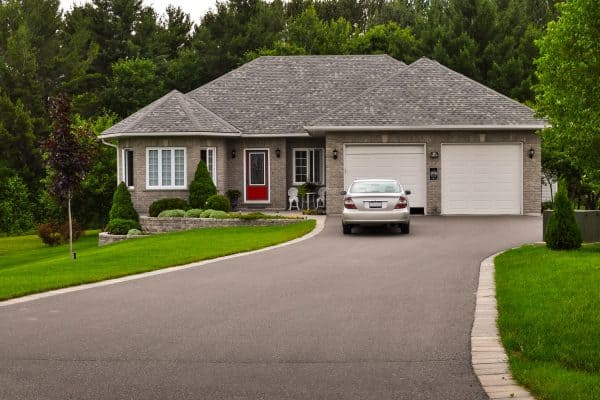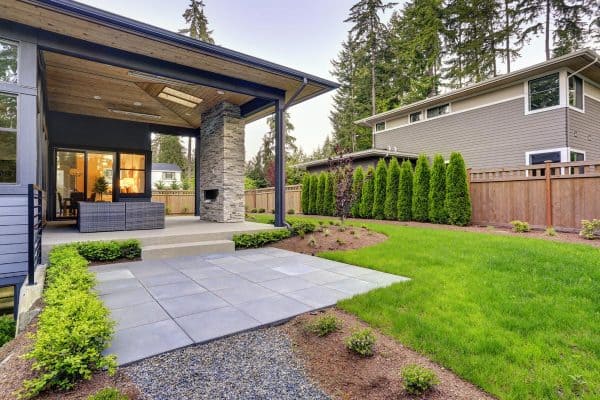Disclosure: We may get commissions for purchases made through links in this post.
Grass pavements are an environmentally-friendly alternative to regular concrete or asphalt pavers. They have a natural look and feel, making them more aesthetically pleasing. The use of grass in the pavement is not a new idea, but many people still don't understand how they work or how to use them properly. This is why we have conducted extensive research to guide you.
A grass paver system is constructed using interlocking grids. It has a high compression strength and is installed above the ground intended to be the pavement surface. Each individual grid compartment sustains soil and naturally growing grass.
There are so many benefits of installing grass pavers. It can be used for roads, sidewalks, and other urban spaces. Stay put as we explore the different benefits of grass pavers and where to use them.
![A car on a parking lot which made from turf block, How Do Grass Pavers Work? [And Where To Use Them]](https://pavingplatform.com/wp-content/uploads/2022/03/How-Do-Grass-Pavers-Work-And-Where-To-Use-Them-800x1200.png)
What Are Grass Pavers?
Grass pavers are a mixture of traditional pavement and grass. Installing grass pavers is a sustainable way to create green spaces in an urban environment.
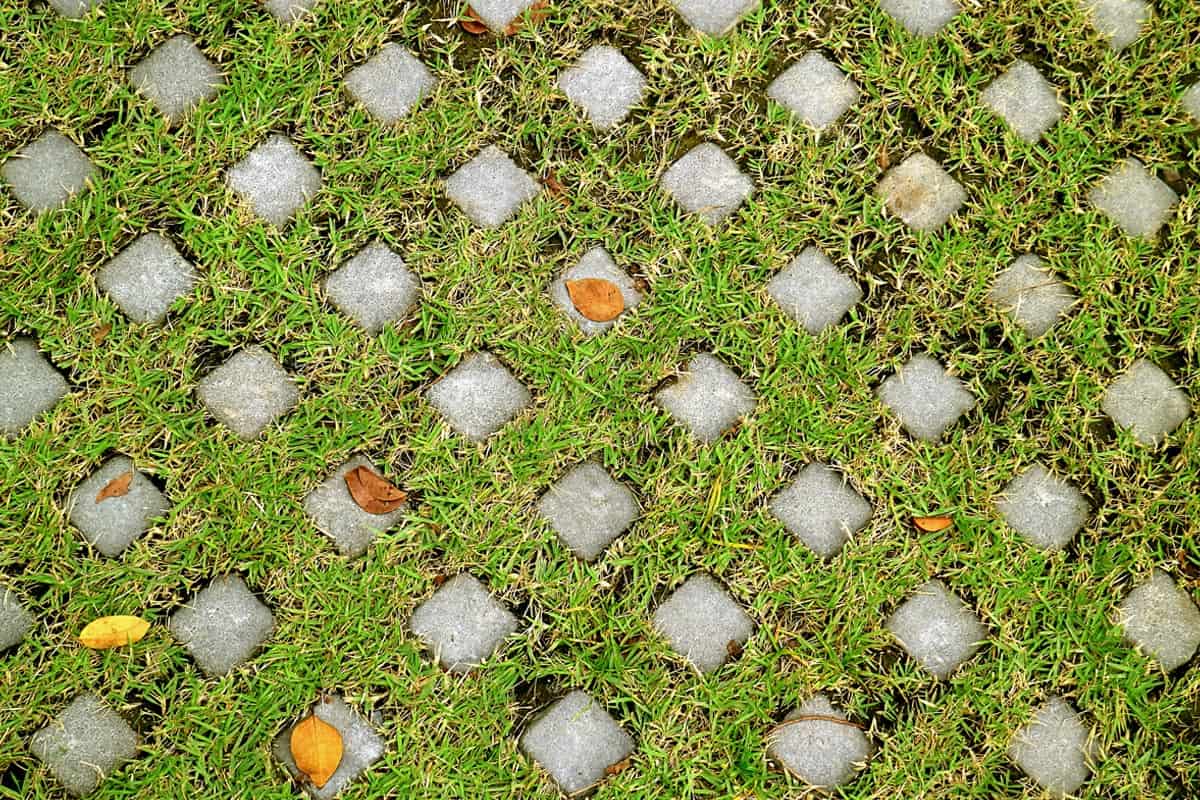
It can be installed over concrete or asphalt surfaces to create a beautiful space that is eco-friendly. This type of pavement can also be made from recycled materials, and it might need more maintenance than regular grass does.
How To Install Grass Pavers
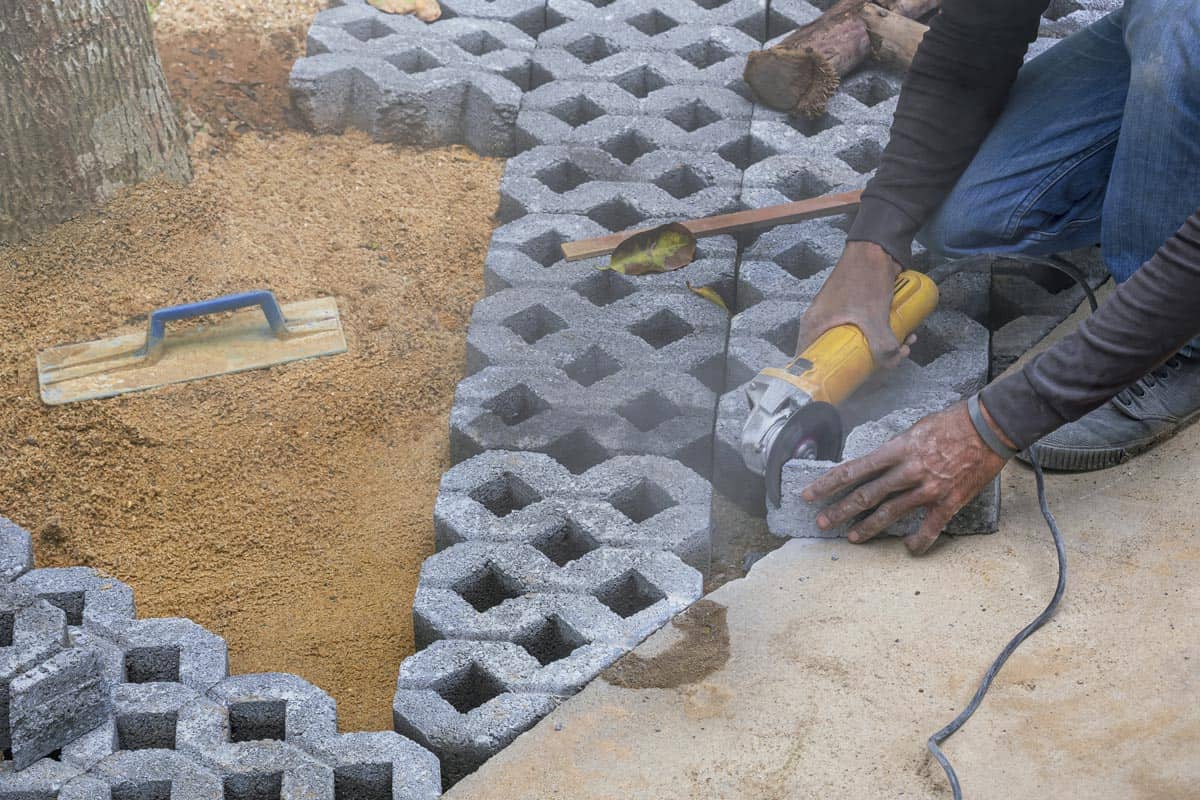
Installing grass pavers can be tedious, but it will be much easier if you follow these step-by-step instructions.
- To install grass pavers, you will need to start by removing any existing vegetation or debris from the area you want to pave. You should also check the soil and ensure that it is stable enough for installation.
- Measure the area where you want to install the grass pavers in square feet and ensure there are no slopes or dips.
- Next, use a shovel to dig up the dirt and remove any roots or stones from the ground.
- Lay down your pavers in a pattern of your choosing. You can use a string line or tape measure to help you get the spacing right.
- Next, use your shovel and dig up the soil between each row of paver until it is about two inches deep. This will allow water to drain through and keep your grass healthy.
- For those who live in areas with minimal rainfall, you can also take the additional step of installing drainage and irrigation pipes underground.
- Lastly, fill in each row with soil to level with the top of the paver. Then cover with topsoil for a beautiful finish.
- This protects the grass's roots, ensuring they can grow naturally without hindrance. After a few weeks, the grass sprouts fully and grows like a regular lawn.
Read our post on what you can put underneath your grass pavers to learn more.
Where Can You Use Grass Pavers?
Driveways
A good driveway not only provides convenience for you but also adds value to your property. Installing grass pavers on your driveway is a simple and inexpensive way to give your property a fresh new look. It is also an excellent way to keep your driveway in good condition for years to come.
Grass pavers can withstand heavy traffic and provide a firm surface that is safe for everyone, including children and pets. Grass pavers are an excellent choice if you want the look of elegance without the expense of buying natural stones.
Walkways
A walkway can be a great addition to any outdoor space. It provides an extra layer of visual interest and acts as a transition between the home and the outside world. Grass pavers are perfect for any walkway, whether in your backyard or front yard.
They are a great way to add texture, color, and interest to your walkway. Plus, they're an excellent option for those who want to create a natural or eco-friendly look at their home entrance.
Parking Spots
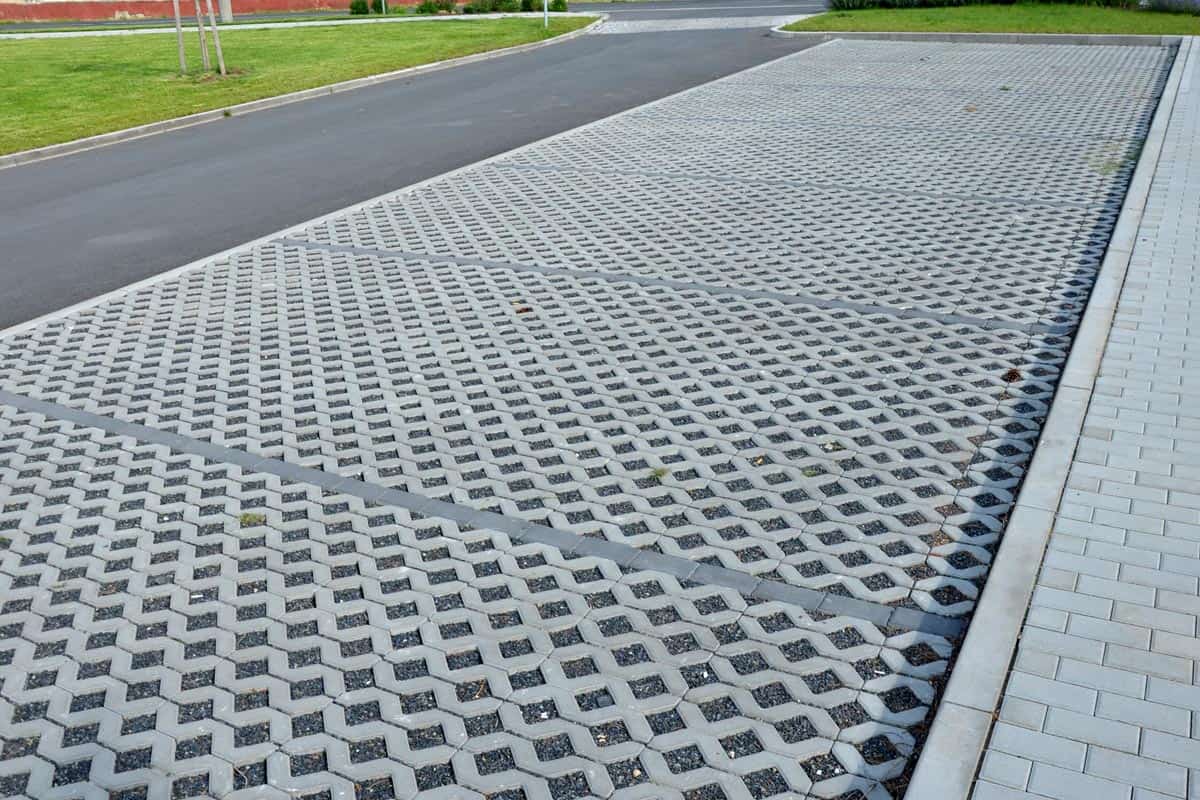
Grass pavers parking spots are becoming a trend, and it is easy to see why. They are a bold way of making a design statement in your yard while providing a refreshing feel to the space. Using grass pavers is a great way to designate unique parking spots for friends and family. These parking spots can be used during recreation events or other gatherings.
Where to Avoid Using Grass Pavers
While grass pavers may be a good choice for your outdoor space, installing them in some areas can cause discomfort. You should avoid adding grass pavers to these parts of your outdoors.
Lounging Areas
Grass pavers are superb for gardens and walkways because they are aesthetically pleasing. But they won’t be the best choice for lounging areas. It is important to note that chairs cannot rest comfortably on grass pavers. The grass will create an uneven surface for the chair to be placed on, and the chair’s legs will sink into the ground.
Area With Lots of Foot Traffic
Grass pavers are a popular choice for creating a walkway or patio. However, they can be uncomfortable to walk on and should not be installed in areas with a lot of foot traffic.
They can also be installed as an edging between the sidewalk and the lawn but should not be used as a walking surface. Heels and shoes with pointy ends can sink into the grass. Plus, they can be slippery when wet, which can lead to accidents.
Cost of Installing Grass Pavers
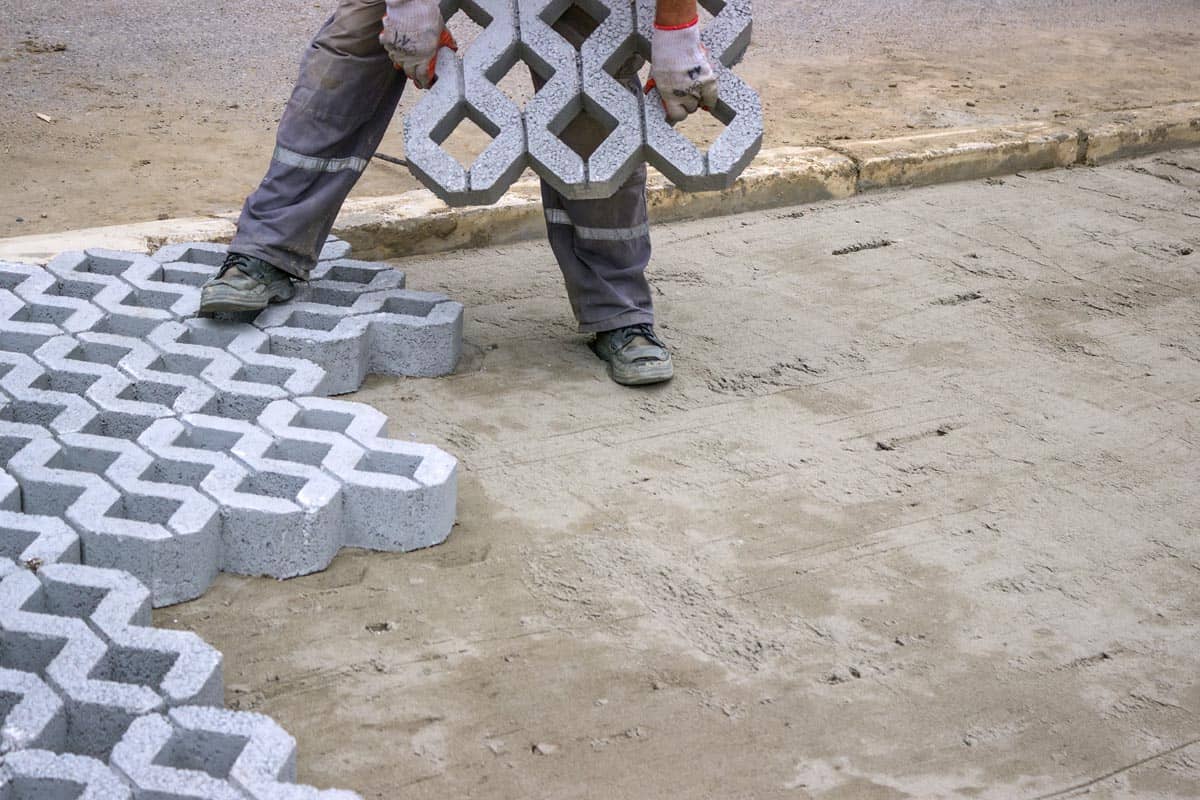
Grass pavers are an excellent option for homeowners who want to make their property look more aesthetically pleasing. In terms of cost, there are a few things you should consider before installing grass pavers on your property. First, you'll need to measure the area you want to pave and make sure it has a slope for proper drainage.
You'll also need to have a good idea of how many pavers blocks you will need and where they should go to form a surface that is level with the ground around them.
Installing grass pavers can be difficult. You can install them on your own if you have the skills to do so, but it might be more cost-effective to hire a landscaping company to do the work. Landscaping companies are well versed in installing grass pavers and can provide the necessary equipment, labor, and materials for a reasonable price.
The cost of installing grass pavers depends on the company and their pricing discounts. Generally, the price can range from $1,000-$2,000 depending on the size of the area that needs to be paved. Late fall and early winter are when most companies offer pricing discounts, so it is a good time to get quotes from different companies for installation costs.
Pros and Cons of a Grass Paver System
Pros
Environmentally Friendly
Grass paver systems are the most environmentally friendly way of paving a surface. A lot of research has been done to see how these systems work and their impact on the environment. It has also been proven that grass pavers are better for the environment than concrete or asphalt.
They are made from recycled plastic, which means they have a lower carbon footprint than other paving materials. The plants also help produce cleaner air, which is vital in today’s world where there is an increasing population of people who suffer from respiratory problems due to the pollution in the air.
Easy Installation
Grass pavers are easier to install than concrete and asphalt. Installing concrete requires specialized skills and equipment. Grass pavers can be installed with minimal experience in construction and without the need for any special tools. The installation process is faster than installing concrete since grass pavers require less material.
Cons
Extra Care Requirements
Weeds in grass pavers are a significant issue associated with installing them. Weeds require a lot of attention and can be very difficult to control if left unattended. They can grow through the cracks in the surface, between the slabs, or even from below ground level, making them difficult to remove.
Weeds or certain types of grass can also cause allergic reactions, so you have to be mindful of the health status of the members of your household before installing one. It is important to keep the area watered and maintained by mowing or cutting at least once a week to avoid this problem.
You can also check out this insightful article on how to stop weed growth in pavers.
High Cost of Installation
The disadvantages of installing grass pavers include high installation costs and difficulty installing them in certain soil types. Grass pavers cost anywhere between $5-$7 per square foot, while concrete or asphalt cost about $2-$4 per square foot. Installing them can also be time-consuming, especially if you need to hire someone to do the job for you.
In Conclusion
Grass pavers are an attractive and green-friendly alternative to traditional paving stones. They have become popular in the landscape industry due to their durability and low maintenance. Grass pavers are not as common as concrete or asphalt, but they have a lot of benefits that make them worth considering for your home or office.

